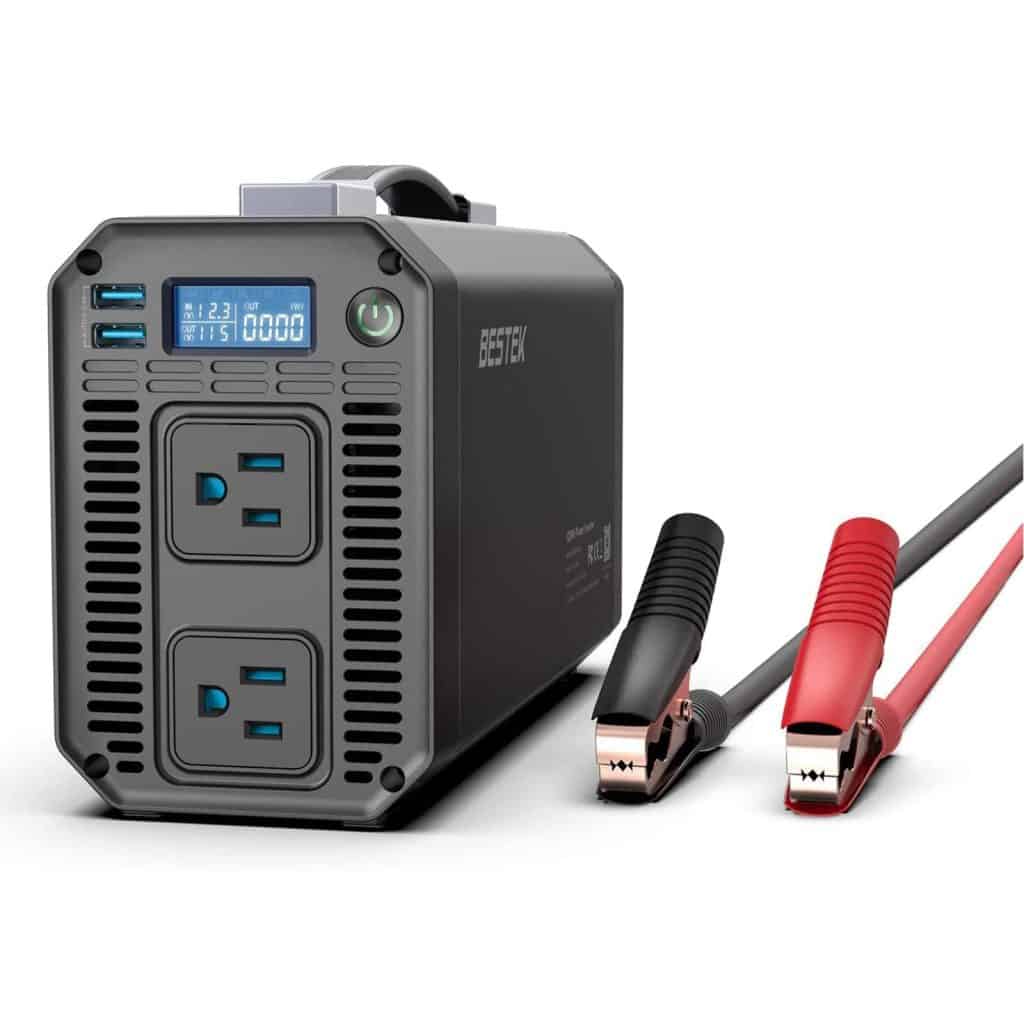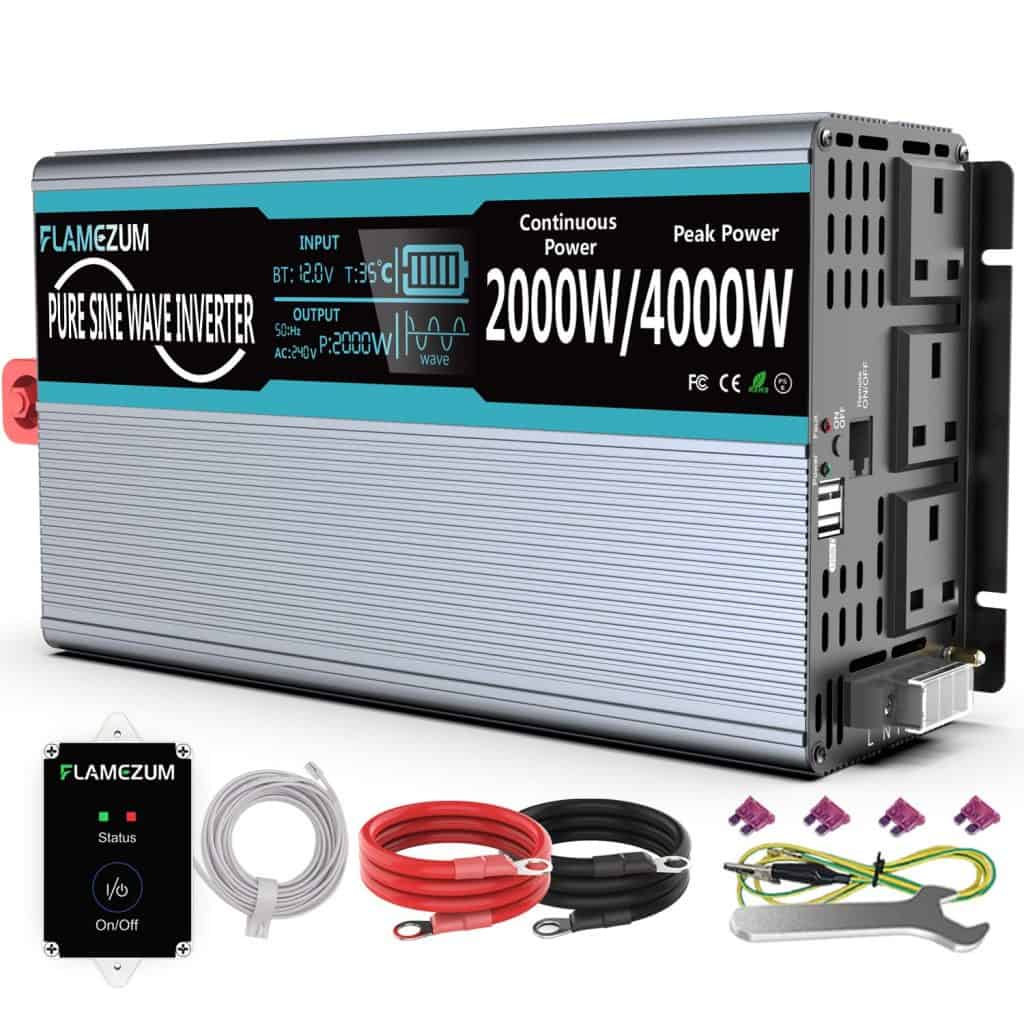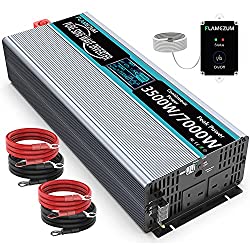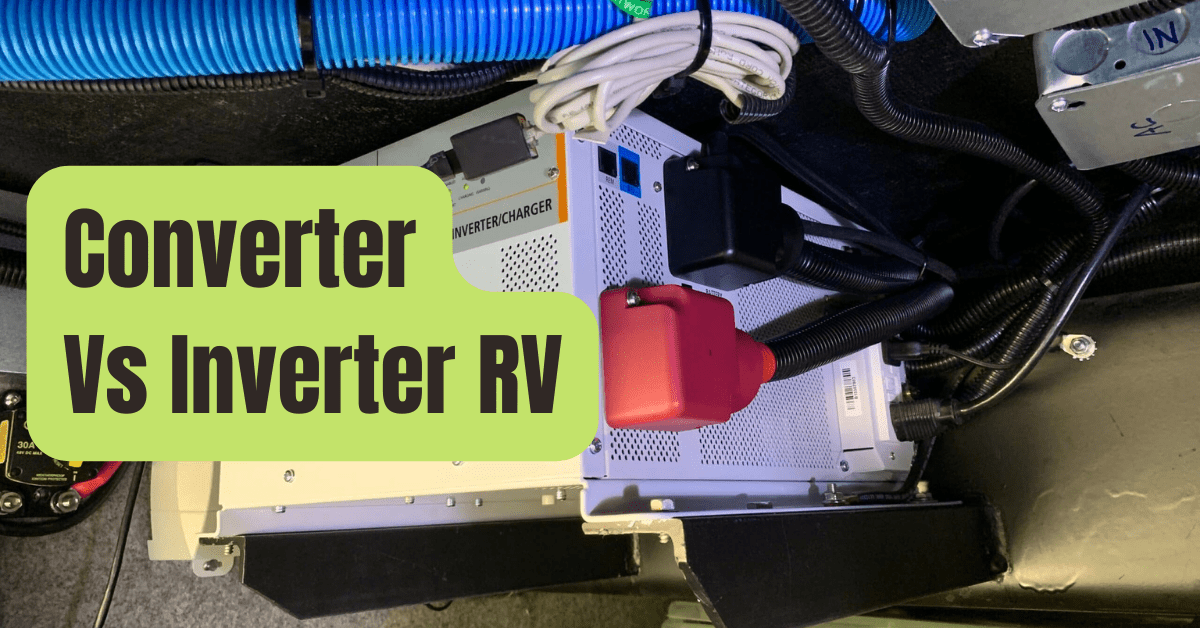It might be difficult to choose the right parts for a campervan electrical system, particularly if you’re not acquainted with all the terms.
A few other components are mentioned, including converters, inverters, and inverter chargers.
The mind is boggled enough already!
The fact that these phrases are often used interchangeably or are given whole distinct names doesn’t help.
Therefore, whether you’re creating a DIY campervan conversion or are a new RV owner, this page discusses the fundamentals of converters, inverters, and the distinctions between them.
Basics of RV Camper Electrics | AC and DC Power
We must first comprehend certain electrical fundamentals in order to better grasp why inverters and power converters are necessary in campers.
Don’t be deterred by this.
It’s not complicated, and we’ve maintained it that way.
Electricity comes in two flavors: AC and DC.
#1. Alternating Current, Often Known As AC Power
Businesses and home appliances commonly utilize AC power, which is produced at power plants and transported via countless miles of power lines.
AC oscillates more than it flows, with the direction of the current continually shifting.
This motion is what generates the power.
This increases the efficiency of transmission over great distances, making it perfect for distributing significant quantities of energy to homes and businesses through national networks.
Every time you connect anything into a wall socket, AC power is used by the majority, if not all, of your home equipment.
However, as AC electricity cannot be stored, power plants regulate their output around-the-clock according to the level of demand in the nation.

#2. Direct Current, Or DC, Energy
DC energy perpetually moves from negative to positive polarity.
This makes it suitable for off-grid living, boondocking, and RV camping, as well as for storing in batteries.
A limited quantity of electricity may be stored in batteries.
Because we are off-grid, we have limited access to power, therefore we try to utilize low voltage equipment whenever we can.
Mobile phones and other battery-operated devices require DC power.
Some products, such as 12v refrigerators, water pumps, and roof vents, are designed expressly for operation with DC electricity.
Direct operation of DC batteries is not possible with devices like domestic refrigerators and TVs that are designed to work on AC power.

#3. In My RV, Do I Need AC Or DC?
The onboard batteries must provide all power requirements for boondocking or living off the grid.
Since batteries only provide DC power, everything that runs directly off of them must also use DC.
Installing just DC equipment eliminates the requirement for AC power if you prefer wild camping to campsites.
You’ll need AC power if you can’t live without your TV and coffee machine.
Additionally, batteries need recharging.
Even if you solely use DC appliances, your batteries will ultimately run out of power since there is no way to replenish the lost energy.
Staying off the grid and avoiding the need for AC electricity is easy with the installation of a camper solar system.
However, if there aren’t enough hours of sunlight, you’ll need AC power to recharge them.
Therefore, you don’t need AC electricity if you can depend on solar power to charge your batteries and just utilize DC products.
Both AC and DC electricity are required to operate any AC device or recharge batteries using grid power.
Why Should My Camper Have a Converter or Inverter?
The quick response is no, you don’t.
Avoiding these electrical components implies using solely DC appliances and charging batteries from solar or the alternator.
A converter, inverter, or both are necessary if AC power is required for battery charging or to run appliances.
Keep in mind that AC appliances cannot be powered by DC.
So how do you use the TV and coffee maker while you’re off the grid?
You must convert the batteries’ DC power to AC power.
It’s also impossible to directly charge a 12 volt DC battery using AC power.
It resembles your laptop’s battery in certain ways.
DC is necessary to charge the battery.
The wire is plugged into the AC outlet.
Before the connection connects to the laptop, the power adapter converts the energy from AC to DC.
Do you need assistance or guidance with your electrical setup?
What Sets an Inverter Apart from a Converter?
Voltage is transformed by both inverters and converters, but they work in opposition to one another.
A converter converts AC power to DC, converting 110v (or 220v) to 12v.
It is sometimes referred to as a battery charger, converter charger, or power converter.
They may also be converted to 24 volts.
An inverter (also known as a power inverter) converts DC electricity to AC power, or 12 volts to 110 volts or 220 volts.
An inverter is required to power AC equipment from the camper battery bank.
You need a converter to use shore power to charge the batteries.
Both an inverter and a converter are included inside an inverter charger.
Convertible RVs

The majority of RVs already have converters installed, but if you’re converting a van to a camper, you should incorporate this in your electrical design.
A battery charger is also known as a converter.
The 12v RV batteries are charged using AC electricity that has been converted to DC.
A converter is the best method to keep your batteries charged if you often camp at campsites with hookups.
Additionally, they are helpful for filling out the battery bank at home in preparation for weekend camping trips.
Even with a top-notch MPPT charge controller, it’s not always possible to get enough sun hours on solar panels while living in a van in the winter, therefore a converter provides a backup for recharging.
We are full-time van dwellers who spend 80–90% of our time boondocking.
Our batteries are charged by solar power, but the converter is useful when we stay at campsites.
Check out our in-depth page on RV converters and battery chargers for additional information.
Here are some suggestions for picking the ideal one for your camper in the interim:
- It must have sufficient power to charge the batteries in a “reasonable” amount of time. Make careful to account for any continuous power use while the battery is charged.
- Look for equipment with simple installation. While most converters are simple to install, others are a little more challenging.
- Make that the converter can handle Lithium-ion, Gel, or AGM batteries.
- For AGM and Gel batteries, use a converter with at least three stages of charge for the most effective charging.
- Use a clever converter for lithium batteries.
Our Top 5 Picks for RV Converters / Battery Chargers
PowerMax Pm3-55 RV Converter Charger

- Integrated cooling fan and three-stage charging
- Overload, reverse polarity, and heat protection
- Two-year guarantee

Progressive Dynamics 70 amp Inteli-Power 9200 Series Converter
- Auxiliary port
- Protection against reverse polarity and low voltage
- Quick charging

Victron Blue Smart IP22
- 93 % effectiveness
- A seven-stage charging procedure
- Equivalent to lithium, gel, and AGM

CTEK MXS10
- Protected against reverse polarity
- 10 amp
- Battery life restoration and flat battery reconditioning program

Numax 12V 10A Converter Charger
- A 12-month guarantee
- Suitable for battery banks of 50 to 135 Ah
- Budget-friendly
Power Inverters for RVs

Planning is necessary while living off the grid to assist lower energy use.
Using power sparingly will enable you to remain off the grid for longer.
We advise utilizing DC substitutes wherever practical.
They tend to be more energy-efficient as well as reducing the demand for AC.
You must convert DC battery power to AC electricity in order to power home equipment like a TV, microwave, or coffee machine.
The task is completed by a power inverter, which also enables direct AC device or extension lead insertion.
For additional information on how an invert transforms current, see our in-depth page about campervan power inverters.
When selecting one for your van life, keep these things in mind:
- Because they use a lot of power and are often rather thirsty, AC electrical gadgets tend to drain your battery bank far more quickly than their DC counterparts.
- More energy cannot be extracted from the battery bank than can be replenished.
- DC to AC conversion is inefficient.
- To be sure you acquire the correct size component for your requirements, use our inverter calculator.
- Try to get the smallest inverter you can manage.
- Purchase an inverter with a pure sine wave rather than one with a modified sine wave; the former will provide a cleaner energy flow, lowering the risk of electronic device damage.
We’ve been getting by with a 300w inverter for over three years.
Our Top 5 Picks for RV Power Inverters and Battery Chargers

BESTEK 300w Power Inverter
- Two outlets and two USB ports
- Protection against overcharging, undercharging, and overheating
- Boost to 700w

Renogy 700w Inverter
- Two outlets
- 700 watts continuously and 1 400 watts spike
- For both the DC input and the AC output, overload protection

BESTEK 1000w Power Inverter
- Two outlets and two USB ports
- 8 defense mechanisms
- Up to 2400w of surge

Renogy 2000w Inverter
- 2000w continuous power and 4000w surge
- For both the DC input and the AC output, overload protection
- LED markers

Renogy 3000w Inverter
- 3000w constant power and 6000w in surge
- For both the DC input and the AC output, overload protection
- Quiet
Battery Inverters

A combination inverter charger may replace two components if you dug deep enough in your wallet.
Another article regarding RV power inverter chargers is available.
An inverter charger is both a power inverter and a smart battery charger, as the name suggests.
They often come with a few additional functions, such as the ability to activate the RV generator when the batteries reach a particular degree of discharge.
They may be turned on automatically as well.
Even though a lot of what you may read online implies that they are far better than the individual components, this isn’t necessarily the case.
Although they do offer additional features, many of them are gimmicks.
Their tendency to be rather large in terms of their power capabilities is their major drawback.
This implies that you will ultimately need to purchase a larger component if you want a big converter but a tiny inverter.
They could be perfect for you, though, if you want very hefty components.
They undoubtedly simplify the electrical setup.
These are the best 3 RV inverter chargers in our opinion.

Victron Combi Multiplus
- Inverter with a 3000w pure sine wave and a 6000w surge
- Clever battery charger 100A
- Compatible with lithium, AGM, and gel batteries

AIMS 3000 Watt Inverter Charger
- Inverter with a 3000w pure sine wave and 9000w surge
- Clever battery charger 100A
- Compatible with lithium, AGM, and gel batteries

Go Power! Inverter Charger
- 3400w surge and 1000w pure sine wave inverter
- Clever battery charger, 125A
- Compatible with lithium, AGM, and gel batteries










